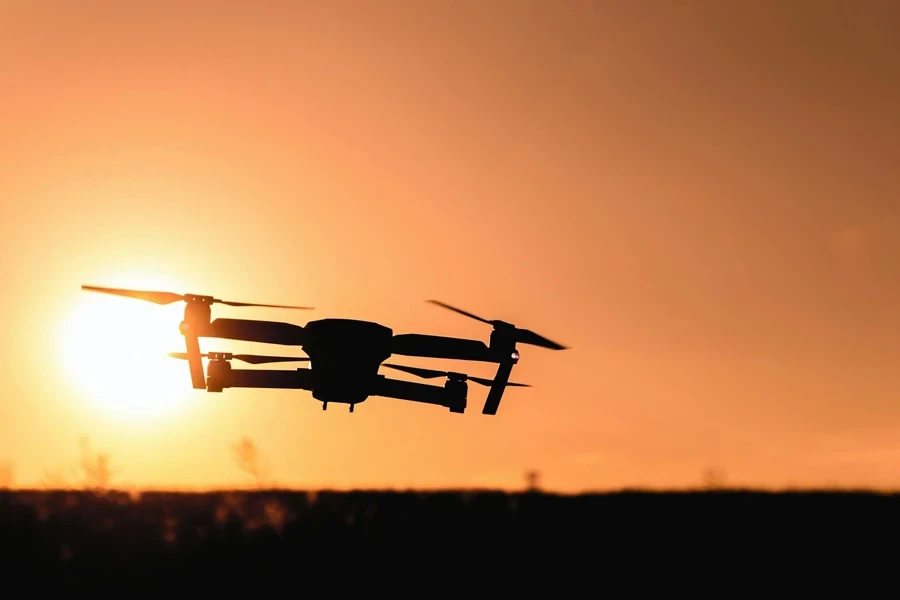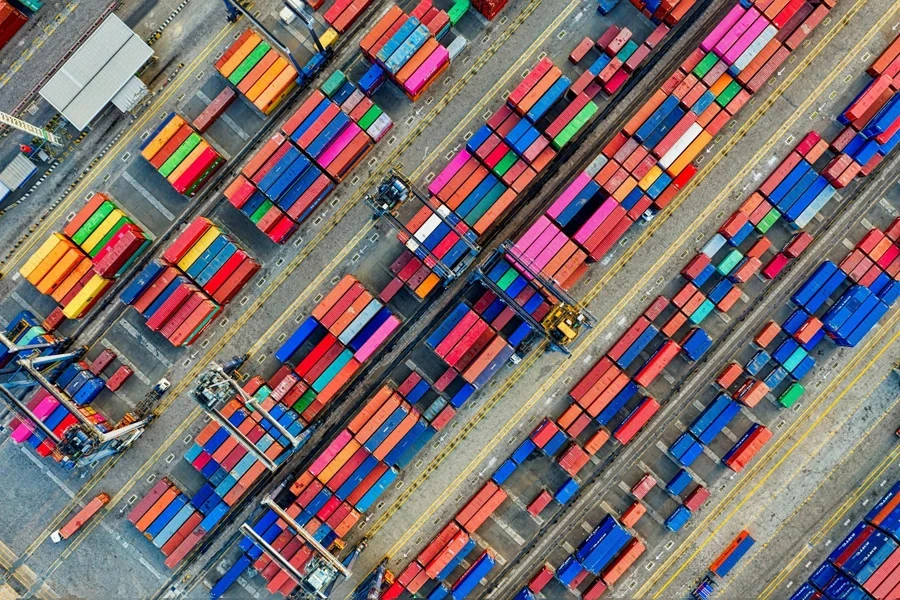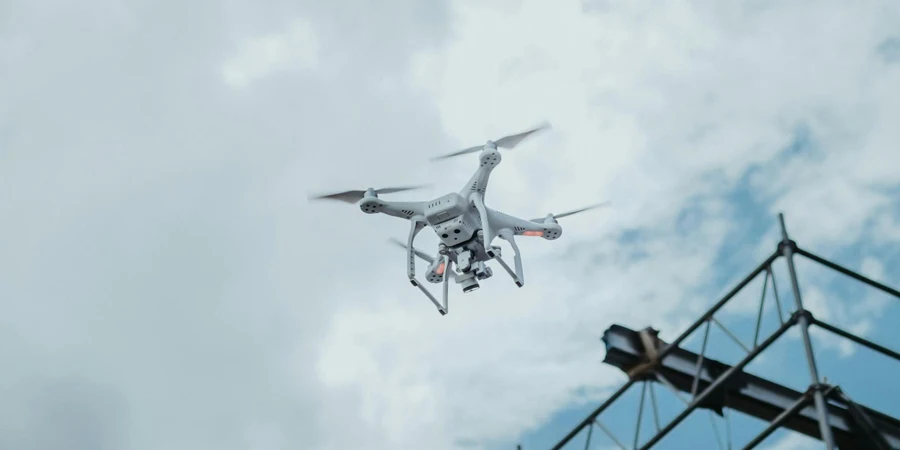Table of Contents
● Introduction
● Market overview
● Things to consider when selecting commercial drones
● Types of commercial drones and their features
● Conclusion
Introduction
In today’s dynamic business landscape, commercial drones are revolutionizing industries such as construction, mining, energy, and agriculture by enhancing data collection processes and operational efficiencies. These industries increasingly rely on drones for their ability to gather high-quality data quickly and cost-effectively, significantly reducing traditional ground survey times and costs. By deploying drones, businesses can access real-time insights and detailed aerial perspectives, crucial for informed decision-making and strategic planning. The growing importance of drones in these sectors is driven by their capacity to improve safety, minimize human error, and streamline complex operations. As technology progresses and adoption rates soar, the strategic integration of drones is becoming a critical component in optimizing industry operations and maintaining competitive advantage.

Market overview
The global commercial drone market has demonstrated robust growth, with its valuation rising from approximately $8.77 billion in 2022 to a projected $54.81 billion by 2030, as per Fortune Business Insights. This trajectory represents a compound annual growth rate (CAGR) of about 25.82% over the period. This surge is largely fueled by the increased adoption of drones across various commercial sectors such as agriculture, construction, and energy, where they are utilized for surveying, monitoring, and inspection tasks. The efficiency and cost-effectiveness of drones in collecting high-quality data quickly have made them indispensable in these fields.
Recent technological advancements have significantly enhanced the capabilities of commercial drones, incorporating AI and machine learning to improve data processing and operational efficiency. These innovations allow drones to execute more complex missions with greater precision and reliability. Additionally, the integration of advanced sensor technologies and the development of drones capable of operating under challenging conditions are expanding their commercial use. The market dynamics are also influenced by strategic developments among key players, including new partnerships and technological innovations, driving forward the global commercial drone industry.
Things to consider when selecting commercial drones
Flying time and batteries
Flying time and battery capacity are critical factors in the performance of drones, influencing how long they can remain airborne to complete various tasks. Drones with longer flying times are essential for extensive operations such as environmental monitoring, large-scale agricultural surveys, or continuous aerial coverage for filming and photography. This endurance is largely dependent on the drone’s battery life; drones equipped with high-capacity lithium-polymer (LiPo) batteries are typically capable of longer flights. Additionally, features such as quick recharge times and the option to swap batteries easily are vital for minimizing downtime and maximizing efficiency in commercial drone operations, ensuring that they can spend more time in the air and less time on the ground.
Flight range and GPS
Flight range and GPS accuracy are pivotal aspects of drone capabilities, dictating how far and how precisely a drone can operate from its controller. The flight range defines the maximum distance a drone can travel away from its control point while still maintaining a robust communication link. This feature is crucial for tasks requiring remote operations, such as surveying large tracts of land or conducting inspections in hazardous environments where direct human intervention is risky. Integrated GPS is essential for navigation and positioning, enabling drones to track their location accurately, follow pre-set flight paths, and return to their starting points autonomously. GPS technology enhances the safety and effectiveness of drones by supporting features like geofencing, waypoint navigation, and stable, GPS-assisted hovering, which are indispensable for precise, reliable aerial operations.
Cameras and first person view (FPV)
Cameras and first person view (FPV) technology are vital components in modern drones, enhancing their utility across various applications. Drone cameras range from basic models suitable for casual use to high-resolution systems capable of capturing detailed aerial photographs and videos for professional quality surveying, inspection, and media production. The quality of the camera affects the drone’s ability to gather visual data essential for industries like real estate, filmmaking, and infrastructure monitoring. FPV technology, on the other hand, immerses the operator in the drone’s flying experience through a real-time video stream directly from the drone’s camera to a headset or display. This feature is particularly valuable in racing drones, where pilots rely on FPV to navigate complex courses at high speeds, but it’s also increasingly used in commercial applications for precise maneuvering in tight or complex environments, allowing operators to see exactly what the drone sees, thus improving accuracy and operational safety.
Repairs and speed
Consideration for ease of repairs and maintenance should not be overlooked. Drones are sophisticated pieces of equipment that may require regular maintenance and occasional repairs. Ease of repair ensures minimal downtime and consistent availability, critical for businesses relying on continuous drone activities. Drones that are easier to maintain, coupled with readily available spare parts and service points, can dramatically reduce turnaround times. Speed, on the other hand, enhances a drone’s ability to quickly execute tasks and respond to conditions, which is crucial in emergency response or delivery services where time is critical. Moreover, the ability of a drone to cover large areas swiftly is invaluable in applications like aerial mapping or agricultural monitoring, making speed and maintenance capabilities key to maximizing the effectiveness and scope of drone operations.

Types of commercial drones and their features
Multi-rotor drones
Multi-rotor drones, which include configurations such as quadcopters, hexacopters, and octocopters, are distinguished by their multiple rotors that provide enhanced stability and precise hovering capabilities. These drones are particularly favored for tasks requiring steady, controlled aerial maneuvers and can be maneuvered in tight spaces, making them suitable for applications such as aerial photography, videography, and detailed inspections. The multiple rotors enable these drones to perform vertical take-offs and landings, which is beneficial in varied environments. Despite their versatility, multi-rotor drones typically have shorter flight times and carry lighter payloads compared to their fixed-wing counterparts, due to higher energy consumption required for maintaining stability and lift.
Fixed-wing drones
Fixed-wing drones are designed like traditional airplanes, utilizing a rigid wing structure to generate lift, which allows for faster flight speeds and longer durations compared to rotary-wing aircraft. This makes them exceptionally well-suited for tasks requiring extensive area coverage, such as environmental monitoring, large-scale agricultural mapping, and long-distance surveying. Because they glide through the air much like an airplane, fixed-wing drones are more energy-efficient, able to cover greater distances on a single charge or fuel load. However, their operation typically requires a runway or catapult for takeoff and a significant amount of space for landing, which can limit their use in confined or rugged terrains. Despite these logistical challenges, their extended flight capabilities and efficiency in long-range missions make fixed-wing drones a preferred choice for many commercial, research, and military applications where endurance and range are prioritized.
Fixed-wing hybrid VTOL (vertical takeoff and landing) drones
Fixed-wing hybrid VTOL (Vertical Takeoff and Landing) drones combine the long-range and efficiency of fixed-wing designs with the vertical takeoff and landing capability of multi-rotor drones. This hybrid approach allows these drones to operate in varied environments without the need for a runway, providing flexibility in deployment, especially in remote or rugged terrains. They transition between vertical and horizontal flight, which is advantageous for missions that require both hover and travel over long distances, such as emergency response, cargo delivery to inaccessible locations, and detailed geographic surveying. The integration of these dual functionalities makes hybrid VTOL drones exceptionally versatile for comprehensive aerial tasks, balancing endurance, payload capacity, and accessibility.
Single-rotor drones
Single-rotor drones, resembling miniature helicopters, are distinguished by their one large main rotor and a smaller tail rotor that stabilizes and steers the aircraft. This design allows them to offer greater lifting power and longer flight times than their multi-rotor counterparts, making them particularly effective for high-endurance tasks. Single-rotor drones are capable of carrying heavier payloads, which is beneficial for applications requiring significant equipment, such as aerial LIDAR surveys, heavy cargo deliveries, or extensive search and rescue missions. Their efficiency in flight makes them suitable for projects that demand both precision and prolonged air time. Additionally, the helicopter-like mechanics enable these drones to hover with high stability and maneuver with exceptional control, qualities essential for detailed inspections and specific, point-to-point operations in varied and challenging environments.

Conclusion
Selecting the right commercial drone is crucial for optimizing operational efficiency across various industries such as construction, mining, energy, and agriculture, each benefiting from specialized features that enhance data collection, improve safety, and streamline processes. High-resolution imaging and real-time data transmission are essential for construction, while robust, environment-resistant drones suit the mining sector. Agriculture benefits from NDVI sensors for crop monitoring, and energy sectors require thermal imaging for infrastructure inspections. Understanding these specific needs and the capabilities of available drones allows businesses to leverage these advanced tools effectively, gaining a competitive edge and achieving significant operational and cost efficiencies.




